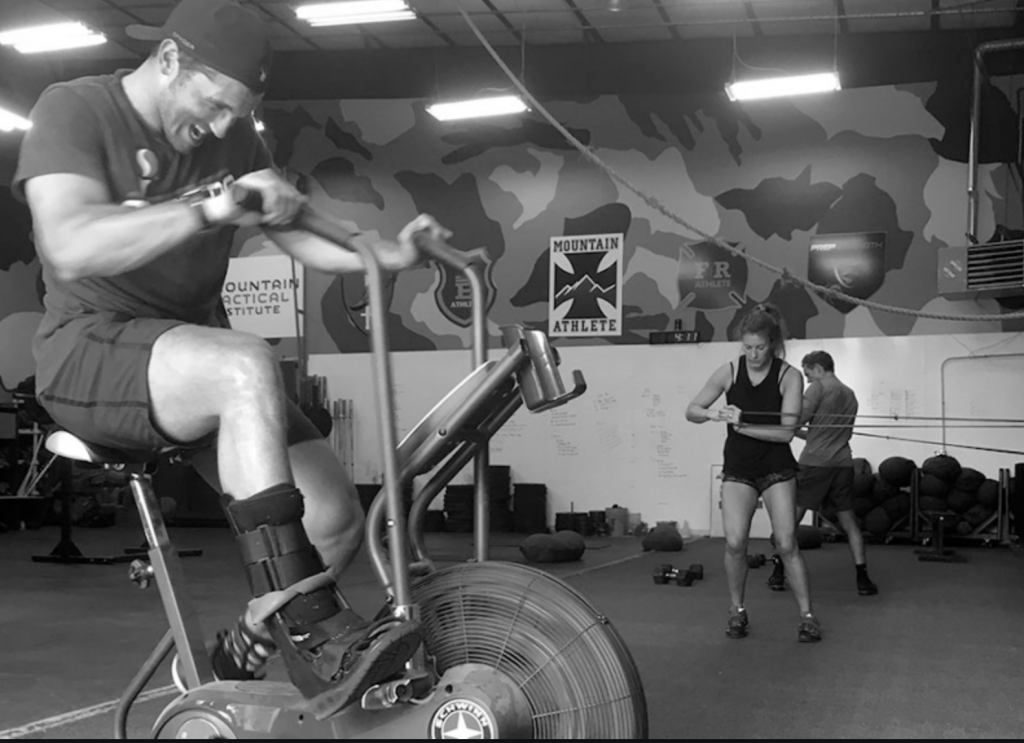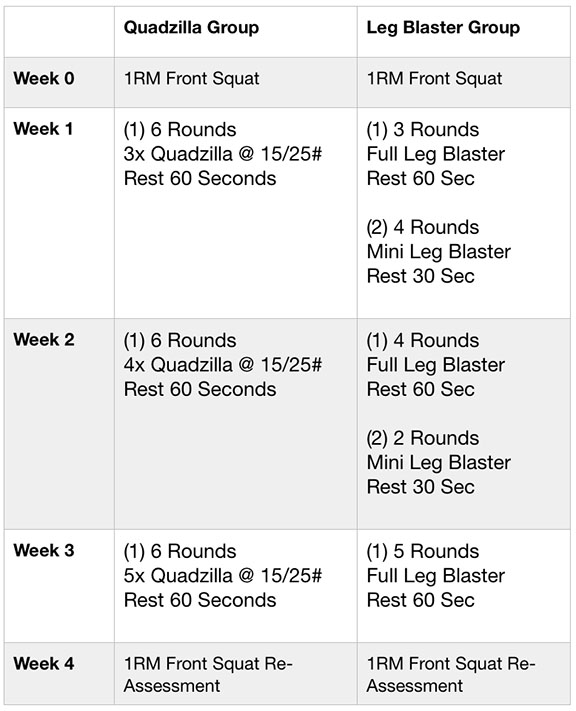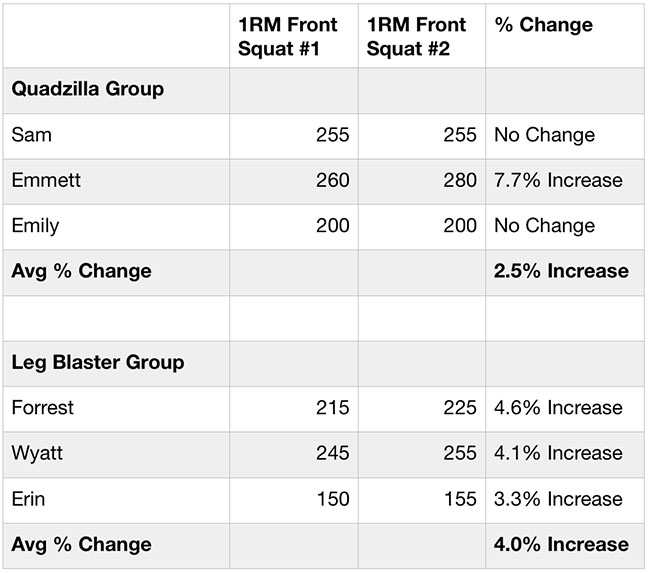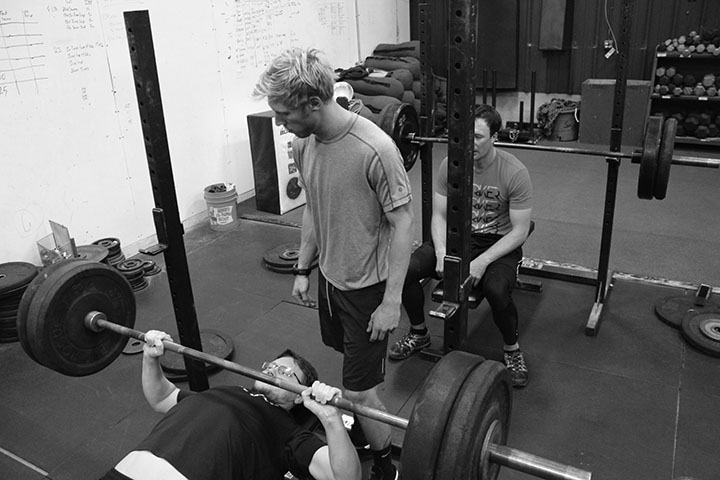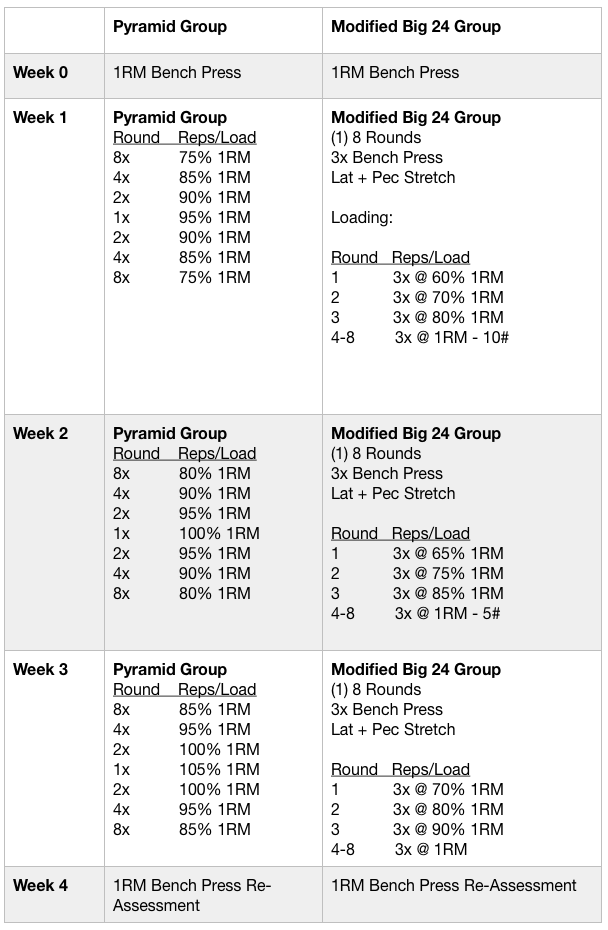QUESTION
I’m a new subscriber to the MTI site and am prepping for 30 days of kite-skiing across Greenland in May 2019. I’d love advice on which plan is best for me, and how to maximize the resources available to MTI subscribers.
Here are some training considerations:
- Will be kiting and pulling a sled with ~150 pounds.
- Elevation will be steep for 3 days (approaching ice sheet, 30ish degree slope angle), then very gradual elevation increase from 6000ft to 10,000ft over 15 days, then similarly slight downhill to the end.
- I will be rafting the grand canyon for October, then working on ships in Antarctica with very limited time and fitness resources for December and January.
- Current fitness level is moderate: can climb a cascade mountain (Hood/Adams/Helens) “off the couch” at a slightly above average pace and be sore for a day or 2 after. That said, I am just getting back from working in Greenland for a month with no fitness training and moderate activity level and am not feeling strong.
I’d be so grateful for any advice you can offer. Thanks in advance for your help.
ANSWER
Now before your rafting trip, I’d recommend
Waylon from our Country Singer plans. A multimodal plan with a slight strength emphasis.
November, move to
Willie from the Country Singer Plans – a multi-modal plan with a slight endurance emphasis.
Email back when you return from your shipboard duty in February.
– Rob
QUESTION
I have been training for selection the last few months. I am currently on fortitude and stacking it with the 5 mile improvement plan.
Yesterday I broke my hand, I’m getting surgery and will more than likely have an 8 week recovery. I expect to be comfortable running 3 weeks post surgery.
At my disposal I have a road bike with a stand that I can ride in my house, access to a full gym, 60/40 pound sand bags, weighted vest, various dumbbells in my house along with a pull up bar.
Here are my current stats:
5 mile run: 42 mins
2 mile run: 13:30 min
2RM craig special: !85
Push up max 79
pullup max 14
sit up max 80
What would you recommend I do to maintain fitness while recovering?
ANSWER
Stacking Fortitude with the 5 mile plan is not a good idea. One plan at a time.
Moving forward? Easiest would be to continue Fortitude but do one-arm lift substitutions – 1-Arm Dumbbell/Kettlebell Craig Specials, Walking Lunges holding the DB/KB in 1-arm, 1-arm Bench Press, 1-Arm bent over row for the pull ups/chin ups.
Use the same set/rep scheme, but do “hard but doable” loading instead of messing with 1RMs. For example:
8 Rounds
2x 1-Arm Craig Special – increase load each round until 2x is hard but doable
Hip Flexor Stretch.
Replace the running in the plan with spinning on a spin bike. Assume you would have run 10 min/miles and spin for that time. So, if the plan calls for a 5-mile run, bike for 50 minutes.
Replace the ruck running in the plan with step ups. 400m = 50x step ups, so a 1-mile run = 200x step ups. Wear a 25# pack for the step ups.
When you can run/ruck run, start back where you left off -you’ll repeat the 3x weeks.
– Rob
QUESTION
Really love MTI and the programming, but as a big ish guy with no running foundation all of the running programs are too heavy on the volume for my knees. I’m 10% body fat and 90kg so I’m not a fat or overly huge, but I’ve rehabbed from
tendinitis in my knee and can’t jump in and run 2-4 miles for time and do intervals like the plans call for without flaring up my knee.
Is there any plans for a ‘return to running’ program? If there isn’t and you think of one I’m happy to be a guinea pig ha.
Thanks for the programming and for putting together a great website.
ANSWER
There’s nothing about being 90Kg that automatically prevents you from running, and 2-4 miles is not a long distance. And I’m not sure what you mean by a knee flare up.
You could do another exercise – spin/bike or row, but these are not transferable, nearly as much, to outdoor activities as running.
What I’d recommend is you get your knee looked at by an ortho doctor, and also you read Chi Running or POSE running, and look at your running form. Also – look at Hoka One One running shoes. Finally, run/walk the distances as necessary until you solve your knee puzzle.
– Rob
QUESTION
I have a six month school coming up that I will be able to concentrate on improving my fitness and diet programs. My goal is to cut my body fat percentage from approx. 28-30% to under 15%. Would you be willing to recommend a program progression that could help me in this endeavor? I am about halfway through the 357 strength program now. Any assistance would be appreciated.
ANSWER
QUESTION
I just graduated from USMC officer candidate school and would like to purchase a work out program but I need some advice. I entered OCS with around a 295 pft but it has now fallen to a 265 ( lost a lot of strength) I weigh around 184 pounds at 6 foot. Before OCS my average max deadlift was 415 with around a 345 squat and a 240 bench press. I come from a rugby player and football backround and have poor mobility. As someone who plans on going to IOC in the future what plans could you recommend to me.
ANSWER
– Rob
QUESTION
Hello coach. I did your 3 week pull up improvement. It worked great. Improved 20 percent. Went from just barely squeezing out 10 (probably 9 and 3/4) to 12. Strict pull ups.
So question is what next? Can you keep repeating the program? I’m currently working through Whiskey. Can I do the pull up program as a warm up to the Whiskey workout for that day? Or is there another pull up methodology I should follow. Whiskey has some pull-ups like chin-ups and Tarzan pull-ups but it doesn’t seem like it’s quite enough to keep improving.
ANSWER
You could do another 3 weeks with that pull up progression, but then I’d recommend changing up the pull up programming – look at our
Pull Up Improvement Packet – and use either the weighted pull up progression or negative. You could put these in as part of the warm up for Whiskey.
– Rob
QUESTION
I want to start one of your programs but need direction. I am 47 years old and I do some running (9-12 miles a week), some calisthenics ,jump rope and some dumbbell training. I am a army veteran. I am usually 12 days a month away from home with access to dumbells and pull up bar at hotel and dumbells up to 90 lbs at home with sand bags and pull up bar. I like rucking also. I want to be in the best shape possible. Where should I start and progress to?
ANSWER
QUESTION
I’m a 42 year old active duty SF guy who has had a staff job for the past three years and now finds himself operational again. I know I can’t “run with the 24 yearolds” but I’d like to regain the ability to at least not slow them down. My question is, which plan to I start with? I have no real injuries other than some nagging golfers elbow in my non dominate arm. I have taken a serious hit to my strength and endurance these past couple of years but have stayed pretty mobile through bjj and yoga. I am a monthly member as well. I have access to a gym and I am currently building a decent home gym too. I just need a doable starting point. Any help would be greatly appreciated! Thank you.
ANSWER
– Rob
QUESTION
I recently commissioned and branched infantry in the US Army. I have until late November to get ready for Officer’s basic. I’ve hardly touched a barbell since I left for basic on the last day of January, so I feel like I need to get my strength back up (it never was amazing in the first place). I know I will proceed with the IBOLC program six weeks out, but am a little stuck on what to do from now until mid-October, to work at my base fitness with an emphasis towards being strong.
Height: 5’10”
Weight: 180
PT Test:
12:45 2 mile
79 Sit ups
65 push ups (army standard – not ranger standard)
Gym lifts (from January)
Deadlift – 390 x1; 315 x 4
Bench – 185 x 4
Push press – 185 x 2
Played hockey and rugby at a semi-pro + collegiate level respectively.
ANSWER
– Rob
QUESTION
I thoroughly enjoy your website. Very informative in terms of programming and articles. I am interesting in finding the best packet of training programs for my fitness goals. I have always participated in team sports but have come to realize that I need to have more of an emphasis on general physical preparedness. I do not have access to a weight room, but in my garage i have med balls, pull bar, parallettes, and kettlebell. I am interested in doing goruck events and obstacle course races like spartan. I have recently started running again and would also like to do some triathlons. I do realize that is alot. Any thoughts and help would be greatly appreciated. Thank you
ANSWER
I’d recommend you start our stuff with the
Bodyweight Foundation Training Plan, and follow it up with Dumbbell/Kettlebell Moe – a train build around kettlebells or dumbbells which trains strength, work capacity, chassis integrity and endurance.
– Rob
QUESTION
Could you please recommend a workout for me. I am 48 years old and in good shape. Previously I have done your pre-afghanistan deployment workout. I have a small gym with boxes, pullup bar, dumbbells to 50lbs, and bench.
ANSWER
You can complete this plan using dumbbells also.
– Rob
QUESTION
Loving the Achilles plan so far, only on week one. I have a power lifter background so it’s nice there is a lot of strength incunjunction with all the other training. My question is: with the exception of the built in stretching, do you have a recommended stretching/ cool down associated with the training plan?
ANSWER
No recommendation for additional stretching. You can do some on your own if you like.
– Rob
QUESTION
What plan would you recommend to go alongside the 2 mile improvement plan, in order to improve or make strength gains or have good functional fitness.
ANSWER
The plan includes bodyweight-based strength work – so nothing in additional, unless you want to replace the non-running days in the plan with lifting on your own.
If you purchased the plan to truly increase your 2-mile time, do it as prescribed.
– Rob
QUESTION
I am a 49 yo male from Germany, average or slightly higher fitness level by IFA assessment (
https://www.ifafitness.com/book/fittest.htm). Last year I rediscovered my passion for skiing (alpine) and recently bought MTI’s Bodyweight Foundation and Lift-Assisted Skiing programs. I focus on Bodyweight Foundation currently.
Today I did the second assessment (Session 13). My question concerns the squat and lunge exercises. Unlike all other exercises, when I do the time prescribed in the assessment session, I do not manage to do the task until exhaustion or failure. That is, time is the only limiting factor, not strength endurance. I do 50 squats in 60 seconds and 50 lunges in 90 seconds. And I could go on – although it gets difficult towards the end.
Now, what do you recommend to do? Just take the max in the prescribed time for the calculation of my reps? Or would it be better to chose a variation of these exercises, i.e. loaded lunges or one-foot squats (while the other is backwards on a chair – pure one-footed are too difficult)? For a training of strength endurance, I would prefer to go to my limits here as well. If variations, which ones would your propose?
I like the programs and the idea of self-adjustment behind them, the library with the video clips is great as well. Looking forward to some leg blasters when season is approaching ; ))
Best regards from Germany
ANSWER
Re-do the assessments for squats and lunge wearing a 25-pound back pack, and then do all your follow-on intervals wearing the back pack.
– Rob
QUESTION
Hi, I recently injured my shoulder. I am wondering what a good plan would be to strengthen it.
ANSWER
QUESTION
I am an in-active Marine sniper. I am 42 years old fire fighter and Coach and Athlete. I find that the Pirate series workouts are fantastic for my physical conditioning for my job and coaching Lacrosse and playing lacrosse/soccer/soccer goalie and not sucking at life. I am also a giant fan of Kettlebells though. I would love to see if there was a way to substitute the bar and dumbbell work with kettlebell movements?
Would it be a case of just substituting the Bar Movements with double kettlebell movements?
I’m just trying to stress my body in a different way but also continue with a plan that is constantly effecting positive change.
ANSWER
Yes – sub the barbell exercises with double kettlebell efforts.
– Rob
QUESTION
I am a Midshipman at the University of Colorado Naval ROTC Battalion in Boulder, CO. This summer I completed SEAL Officer Selection and Assessment (SOAS). Overall, I was definitely prepared for the swimming and all of the running we did at SOAS, but I need to get stronger for being under a log or boat. I’m trying to find a good strength program that will last 8-12 weeks before I move back into more BUD/S specific training.
Background info:
1.) I grew up training endurance sports (swimming, running, triathlon), and competed in triathlon until Spring 2016. During this time I was not doing much lifting or upper body calisthenics.
2.) Starting in Summer 2016, I began placing a bigger emphasis on lifting and upper body calisthenics to start preparing for SOAS. Winter 2016/17, I had to take 3 months off of training completely due to tendonitis in both elbows and shoulders, a tibial stress fracture, and hernia surgery. I worked with a physical therapist to rehab everything and began a SOAS specific training plan that focused on PST performance.
3.) SOAS Performance:
PST: Swim- 7:40 (500 meter instead of yards w/out goggles/masks), Push-ups- 92, Sit-ups- 103, Pull-ups- 16 (first 10 on cadence), Run- 8:20.
I was always in the top 3 for any run or swim that we did and won a couple of them. I was also one of the top performers on the ruck that we did. I was average with boat PT and surf passage, my calisthenics were average, but I’d like to get them better, and I struggled more than average on log PT (specifically OH press and chest carry). I was probably one of the lower performers on log PT.
Overall, I was definitely prepared for the swimming and all of the running we did at SOAS, but I need to get stronger for being under a log or boat.
4.) Current Strength Performance:
Body Weight: 182 +/-2# depending on the week
Bench 5RM: 185#
Back Squat 5RM: 235#
Deadlift 5RM: 285#
OH Press 5RM: 100#
4.) I’ve been injury free since March 2017, and am currently working with a physical therapist on mobility and proper movement technique. I graduate in December, and regardless of whether I commission or enlist, I have about a 25 week training meso-cycle before I’m back in Coronado for BUD/S or at NSW Prep School in Great Lakes.
Right now I’m strongly considering doing the 4 week Hypertrophy for Skinny Guys then moving straight into 8 weeks of Rat 6 and re-evaluating from there. Please let me know if I’m on the right track or if you need any more information to help me select a good training program.
ANSWER
Skip Hypertrophy and roll right into a strength plan. Rat 6 is awesome. I’d follow it up with
Black Beard from our Pirate Series. You’ll still train strength, but also work capacity and endurance (ruck run, swimming) prior to beginning your BUD/s specific programming.
– Rob
QUESTION
I am looking to buy a training program or two. First, some context:
36 Year Old Male
Army Civil Affairs Team Lead – Reservist, former Infantry Scout.
I have Airborne Jump School coming up in the next few months,
between December 2018 and June of 2019.
I am 5’10” and 183 pounds.
Mostly an endurance athlete (Marathons, Ultras on Skis, Wilderness Classic, etc)
Not interested in Bulking up – but I want to become stronger and lose weight.
I have limited time in my schedule right now, should I be looking a the Military OnRamp or one of the time limited operator plans? If the later, which one?
After this first plan, what follow on plan I should be aiming for?
I want a tougher body/joints for Jump School, and am always trying to get a perfect score on the Army APFT. I want to run a sub 12min two mile, and be able to do 75 push ups in 2 min. I think one Ruck a week would be sufficient, as rucking is not really on my horizon in the next year.
The key with this second phase is steady state, staying healthy and uninjured in my old age.
Hope to hear back from you with some direction.
ANSWER
Understand I don’t have one program which will make you great at everything all the time. Rather, we use the concept of “base fitness” to lay a high level of foundational tactical base fitness, (these are the Greek Hero plans) and on top of these, complete sport/school/mission-specific training plans directly before the event.
So, 6 weeks before your APFT, drop out of the Greek Hero programming and complete the
APFT Training Plan. After the APFT, drop back into the Greek Hero Plans.
– Rob
QUESTION
I’m eyeing the Super Squats Strength Program once I reach a 315 back squat. The original Strossen program had no training on the off-days; will doing the prescribed running and circuit on Tuesdays and Thursdays inhibit my recovery in any way?
Also, what sort of strength improvement results are common with the actual Super Squats program? I understand the SS mini-study was done with a two-day version of the program.
ANSWER
1) Yes. Less time to recover. MTI’s primary focus is mountain and tactical athletes, not power lifters – who don’t need work capacity, etc.
2) 10-20% depending upon the training age of the athlete. New to training = more gain.
– Rob
QUESTION
I ran through the greek heroine series, and wondering what to do before getting ready for ice/mixed season (last year I did that plan in October).
Right now still climbing pretty regularly, but will climb less once I start my new job in two weeks.
ANSWER
– Rob
Subscribe to MTI's Newsletter - BETA

